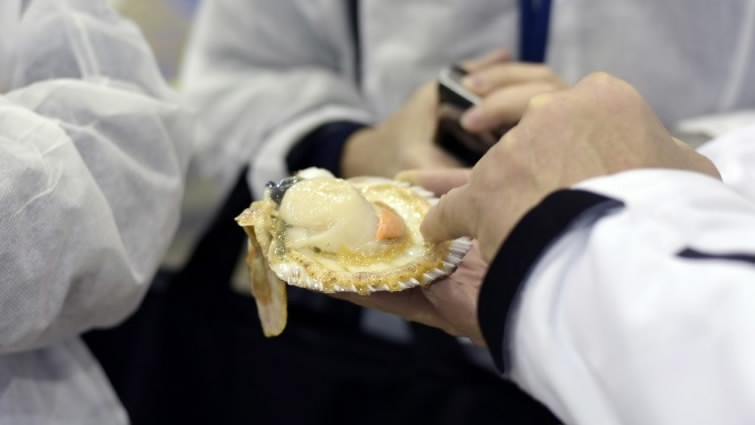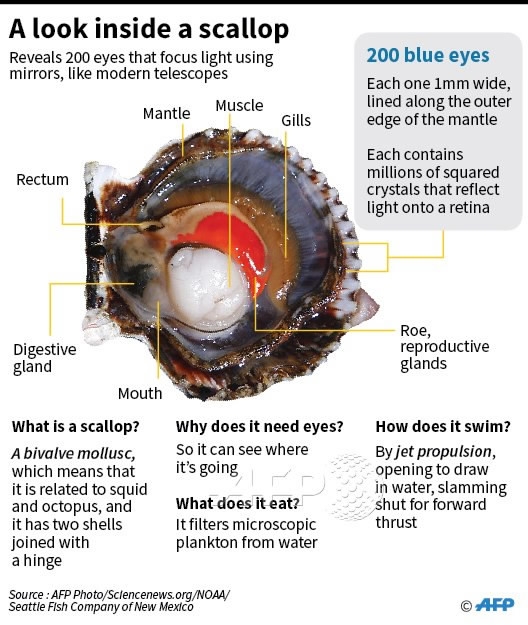
Animal
16:42, 01-Dec-2017
Study: Scallops have 200 eyes, which function like a telescope

Scallops may look like simple creatures, but the seafood delicacy has 200 eyes that function remarkably like a telescope, using living mirrors to focus light, researchers said on Thursday.
Most creatures' eyes have lenses that focus light. But scallops have concave mirrors at the back of their eyes.
Scientists have known since the 1960s that Pecten scallops see by reflecting light off these concave mirrors onto the retina above, said the report in the journal Science. Some crustaceans and deep-sea fish also have eyes like this.
But now they have found a way to peer more deeply into these mirrors than ever before, by using a microscope that rapidly freezes samples so they do not get dehydrated and retain their shape.
The result is the first-ever view of a mosaic of tiny mirrors and crystals, carefully arranged inside scallops' small poppy seed-like eyes which line their outer edge, known as the mantle.

AFP Infographic
AFP Infographic
Each mirror is layered, reflecting wavelengths of light in their habitat and giving them a spatial view of their surroundings.
Each mirror is also "tiled with a mosaic of square-shaped crystals, minimizing surface defects for a clearer picture," the Science report said.
"The mirror forms images on a double-layered retina, to separately image both peripheral and central fields of view."
While it is still difficult to know what the world looks like to a scallop, researchers say this well-honed peripheral vision likely helps the scallop control and guide its movement while swimming, enabling it to assess which things around it are static or moving.
The findings illustrate scallops' "remarkable" ability to grow their own complex visual system, and may pave the way for "novel bio-inspired optical devices for imaging and sensing applications," the report said.
The study was led by researchers at Israel's Weizmann Institute of Science and Lund University in Sweden.
Source(s): AFP

SITEMAP
Copyright © 2018 CGTN. Beijing ICP prepared NO.16065310-3
Copyright © 2018 CGTN. Beijing ICP prepared NO.16065310-3